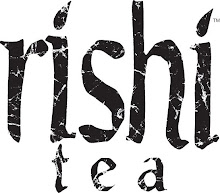Our goal is to take tea to a whole new level of appreciation. The evolution of wine and coffee in the US have inspired us and set reasonable goals for us to achieve.
Just 10 years ago, most consumers ordered wine by the type (red, white, etc.). Today, consumers are more likely to order wine based on varietal, style, vintage, and origin. Wine consumers have become very sophisticated.
The physics of leaf, water volume, timing, and temperature
are affected by brewing utensils
Within the last five years, consumers have begun to pay attention to the temperature at which their wine is stored and served as well as the shape and volume of the glass they savor their wine in.
Espresso and coffee also have blossomed from a simple beverage to a gourmet experience. Coffee bars are now using 2-3 times the amount of coffee grounds to make an average coffee drink. Coffee drinks have become stronger with richer body and a wider range of flavor profiles.
Single origin coffees, varietals, and complicated yet rewarding brewing methods, coupled with consumer education about coffee, have led this age-old beverage into a renaissance period.
People have come to expect more from coffee and wine, but what about tea? Can we cultivate an elevation in the understanding and appreciation of tea similar to that for wine and coffee? Yes, we can!
First, we must understand that our brewing methods and our concepts of tea are stuck in the 19th Century, when much of the tea consumed in the US was Congou black or broken leaf teas. Much of the premium tea we offer today was not even available in the US 10 years ago. Many of these teas can’t be measured with a teaspoon and have simple yet unique brewing methods that render the best flavors.
Ms. Yumiko-san measuring the proper amount of Gyokuro for brewing in a Ho-hin.
Modern consumers have an unprecedented abundance of superb tea available to them, but rarely do they taste the full potential greatness of the leaf. People still make their tea too dilute, using a small amount of leaf in a large volume of water with teapots better suited for Victorian-era tea service. Many of the teas we appreciate today should be brewed using more leaf,
controlling the infusion temperature and time to yield a strong, aromatic, rich bodied and stronger infusion.
A Ho-hin is a traditional brewing vessel or small type of teapot used for fine green teas like Gyokuro.
It’s so important for people to understand the traditional and delicious flavors that remain locked within the potential of their tea leaves. The key is to grow the awareness and educate tea lovers about various brewing methods so they can fully enjoy the teas available to them.
Once the true taste and energy of tea is revealed through better brewing, I believe tea will enjoy a renaissance period like wine and coffee. The nuance of varietal, origin, vintage, season, and style will become apparent and appreciated only when we stop serving tea in an antiquated manner.
Sencha green tea from Japan is an example of a very popular tea that very few people brew to the tea’s full potential. This year, at the
World Tea Expo in Las Vegas, Rishi Tea invited our friend, Mr. Tadao Yasukura-san, a 70-year-old tea master from the Obaku Kofu Ryo school of Sencha-do, to lead tea ceremonies and brewing workshops in our booth.
The
Sencha-do ceremonies educated our customers about improved brewing methods and helped nurture a better understanding of the wonderful flavor and energy of Sencha green tea. The workshops were a great success, informing tea lovers about the history and tradition of Japanese green tea as well as the improved brewing methods of using more tea and shorter brewing times.
A rich, flavorful brew of roasted Bancha expertly decanted by Mr. Yasukura-san.
It’s important that we learn about various traditional brewing methods used in the tea origin and producing countries. Each tea has a specific brewing method best suited to its leaf style. Even if we don’t use the same meticulous methods or rare ceramics as a tea master, we can taste the way tea should taste and implement our own techniques to improve the way we serve and enjoy tea.
I hope tea lovers will be inspired to adapt certain core principles from traditional tea brewing methods in order to create their own unique style.






